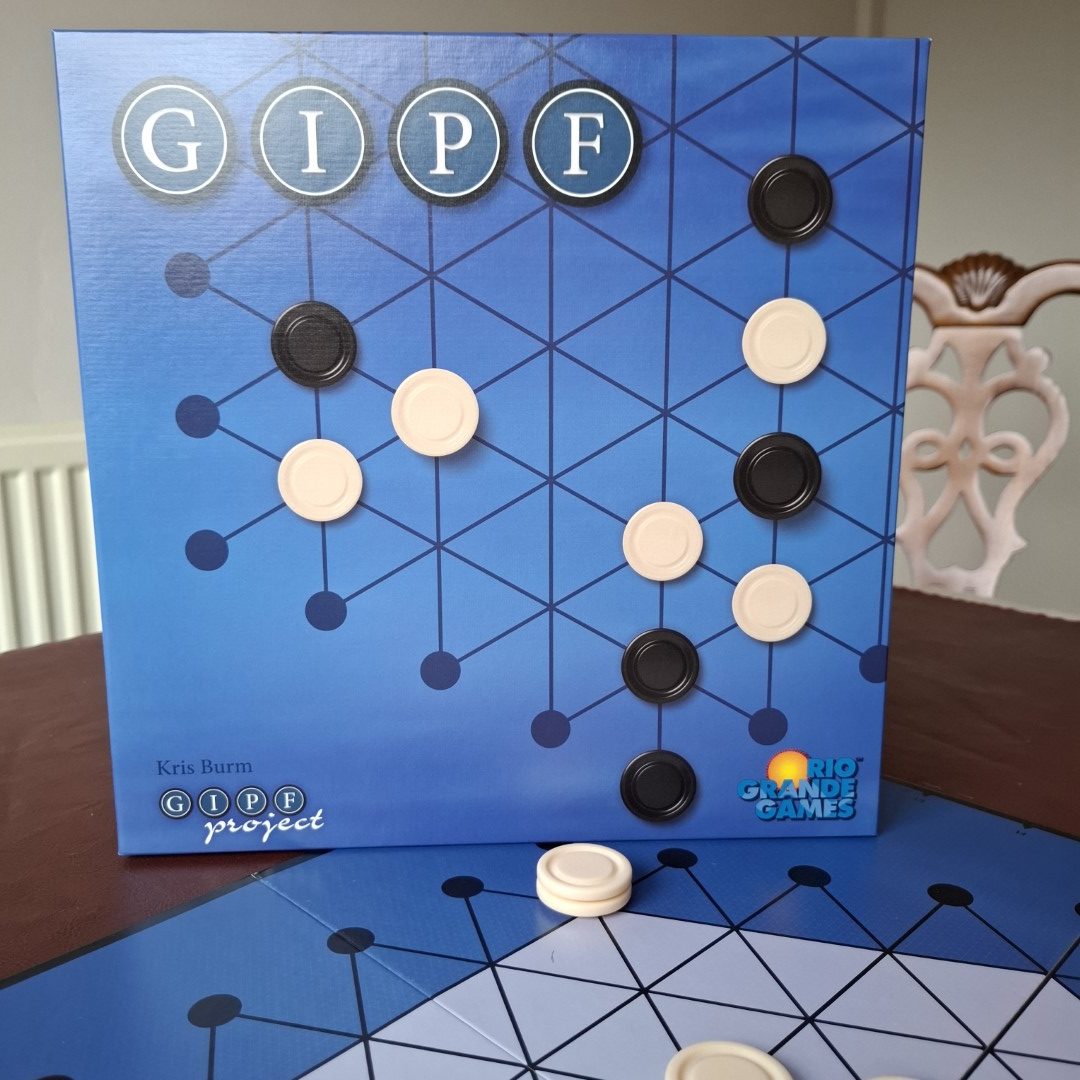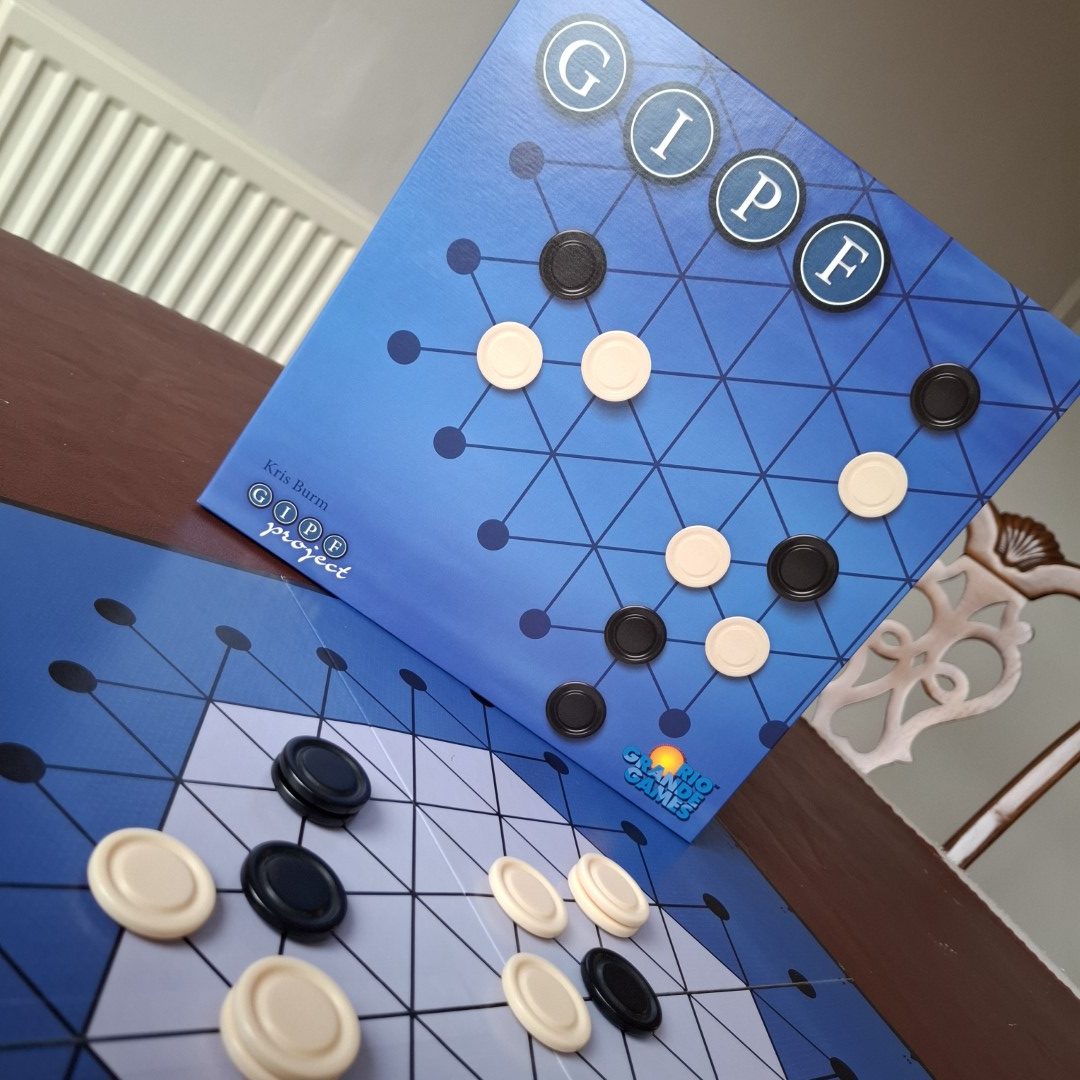Okay, GIPF isn’t actually connect four—I just wanted your attention. GIPF is the first game in the GIPF series designed by Kris Brum. In this game, you’re trying to form lines of four pieces either to capture your opponent’s pieces or to bring your own back into your hand for future turns. The game ends when a player can’t take a turn because they’re out of pieces to place on the board.
Since GIPF is the first game in a series named after it, you’d expect it to be great, right? Well, let’s see.
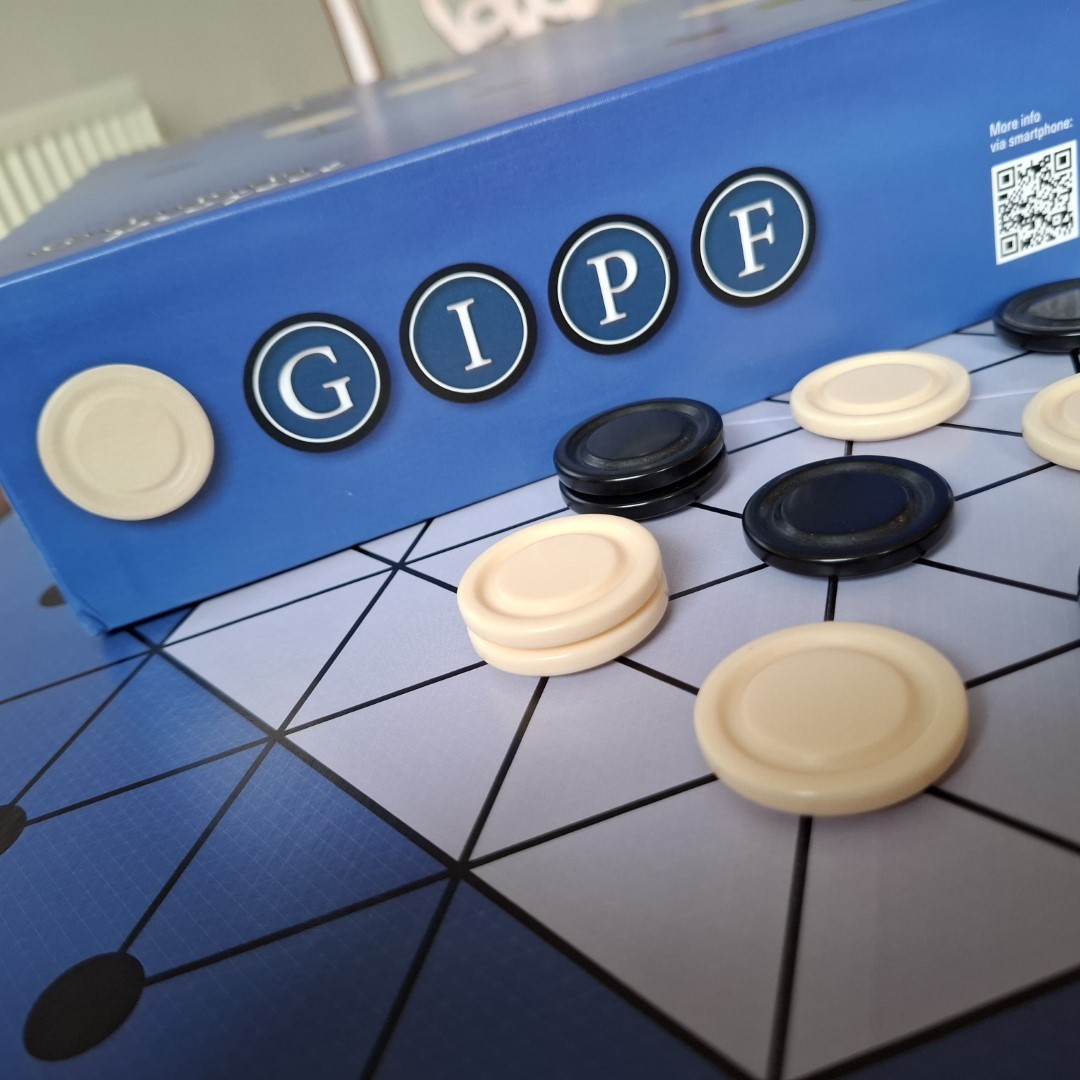
How to Play (Basic Rules)
GIPF is relatively simple and almost comparable to Connect Four (or Four in a Row) because you’re essentially aiming to align four pieces. Each player picks a color and starts with 15 pieces, three of which are placed on the board at designated spots.
The board is surrounded by 24 dots, which act as starting positions. At the start of each turn, you place a piece on one of these dots and then move it into an adjacent empty space. If that space is occupied, the occupying piece is pushed into the next space. If that space is also occupied, the chain reaction continues until an empty spot is found.
When you form a line of four connected pieces, they’re removed from the board. If the line extends in a direction, those pieces are also removed. Your pieces are returned to your supply, while your opponent’s are captured, reducing their supply. However, you can’t force a piece off the board, so no endless cycling along a single line.
The game ends if you can’t place a piece at the start of your turn. In that case, you lose.
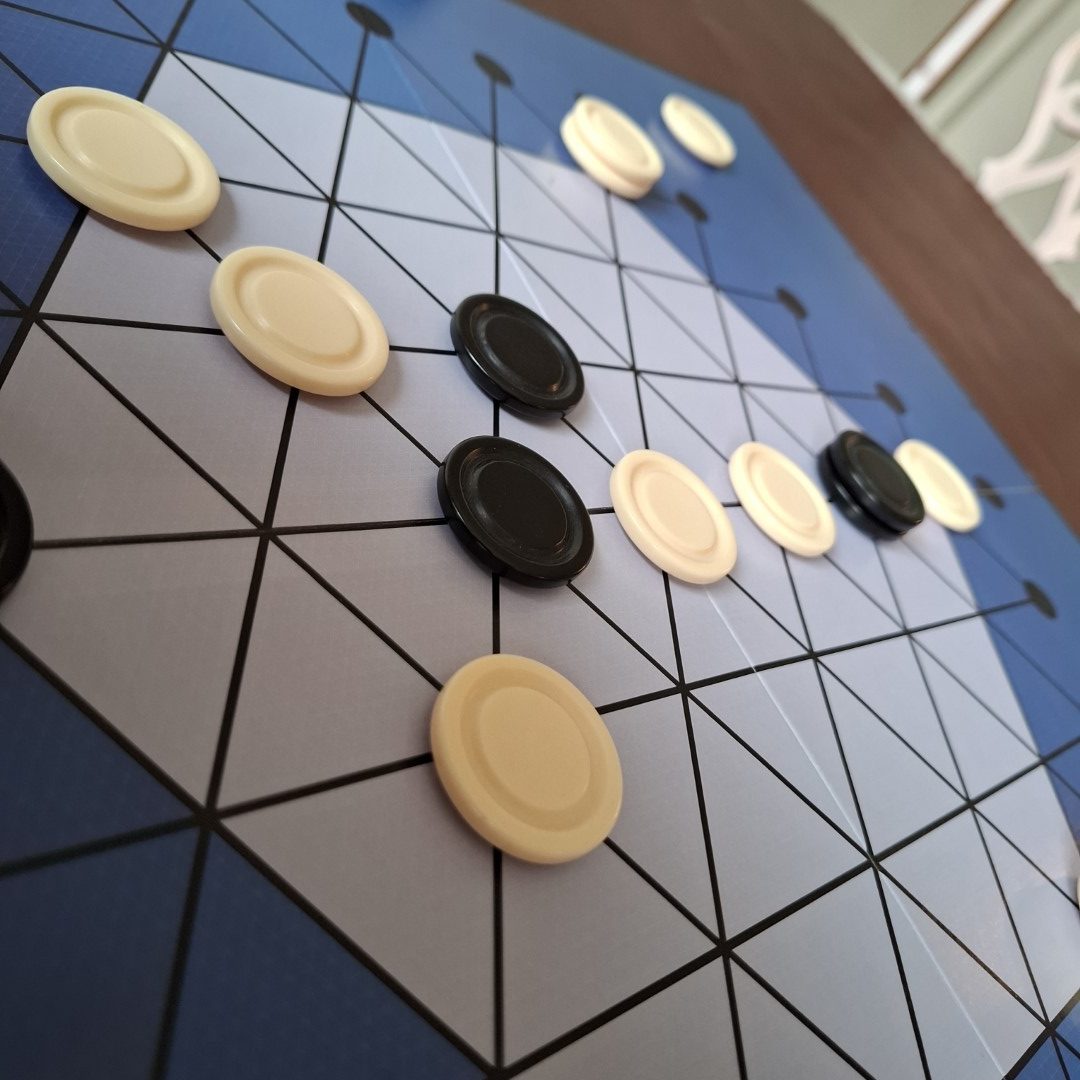
First Thoughts
I was initially disappointed that you don’t actually slide pieces; instead, you move each one individually in the line you’re pushing. It feels like a missed opportunity for that satisfying board-game experience. Maybe that could’ve been the hook? Even though GIPF is an abstract game with strategic depth, a tactile element like sliding pieces could’ve made it a bit more appealing.
Our first few games felt a bit uneventful. It seemed like we both wanted more pieces, or maybe we were approaching GIPF with the wrong mindset. Instead of constantly setting up our own plays, we should’ve been focusing on forcing our opponent into moves that would create opportunities for us.
Similar to TZAAR, I find the use of black-and-white rules on a colored background odd. It’s not a deal-breaker, but it does make the rules feel less engaging compared to the colorful game components. Also, the rulebook still uses “he” to refer to players, which could use an update for inclusivity.
On the bright side, there’s a brief yet helpful strategy guide with tips that reinforce the game’s strategic goals. I recently noted that Unmatched could benefit from character-specific hints and tips, so it was nice to see something like that included in GIPF.
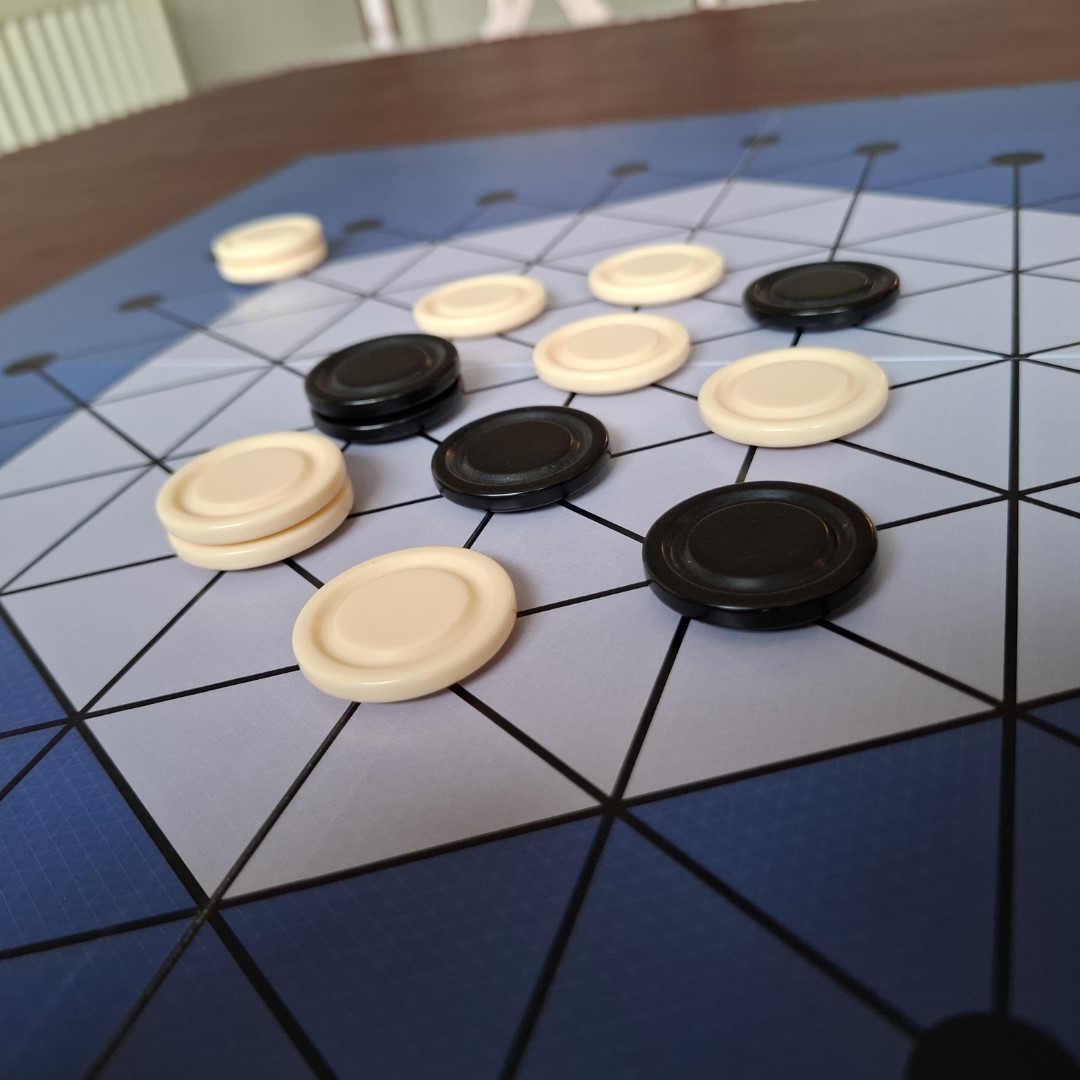
More Plays, More Thoughts
GIPF offers two main ways to play, plus a tournament variation. After two games, we switched to the standard rules, which introduce a few changes. First, GIPF pieces are added—these are two pieces stacked together and placed on the board at the start. Unlike regular pieces, GIPF pieces don’t have to be removed when they’re part of a line of four.
This change introduces a new win condition: if you lose all your GIPF pieces, you lose. Of course, if you can’t place a piece, you still lose. At first glance, this seems like a small change, but it significantly impacts the gameplay.
With GIPF pieces on the board, there’s added pressure to defend your own while attacking your opponent’s. A GIPF piece only needs to be in a line of four to be at risk of removal, so they become prime targets. Interestingly, GIPF pieces can also be used strategically to remove two lines at once if they intersect. In rare cases, you might even choose to remove your own GIPF to replenish your supply, although maintaining board presence is crucial.
Strategically, you’ll rarely want to remove your own GIPF pieces. For example, if you connect four of your opponent’s pieces and your GIPF is on that row, you’re unlikely to sacrifice your GIPF.
This change added a layer of strategy and forced us to play a more balanced game. You could argue that the basic rules already had this depth, but it felt more pronounced with the standard rules. There’s now a stronger focus on manipulating your opponent into capturing their own pieces to maintain board presence. The standard rules also allow for more buildup of strategic moves.
Even with this added complexity, I still find GIPF somewhat slow—not cumbersome, but just a bit sluggish. In TZAAR, every move feels like an attack, and its rapid pacing is one of its biggest selling points. GIPF, on the other hand, requires more long-term planning, which might be what creates the sense of slower gameplay.
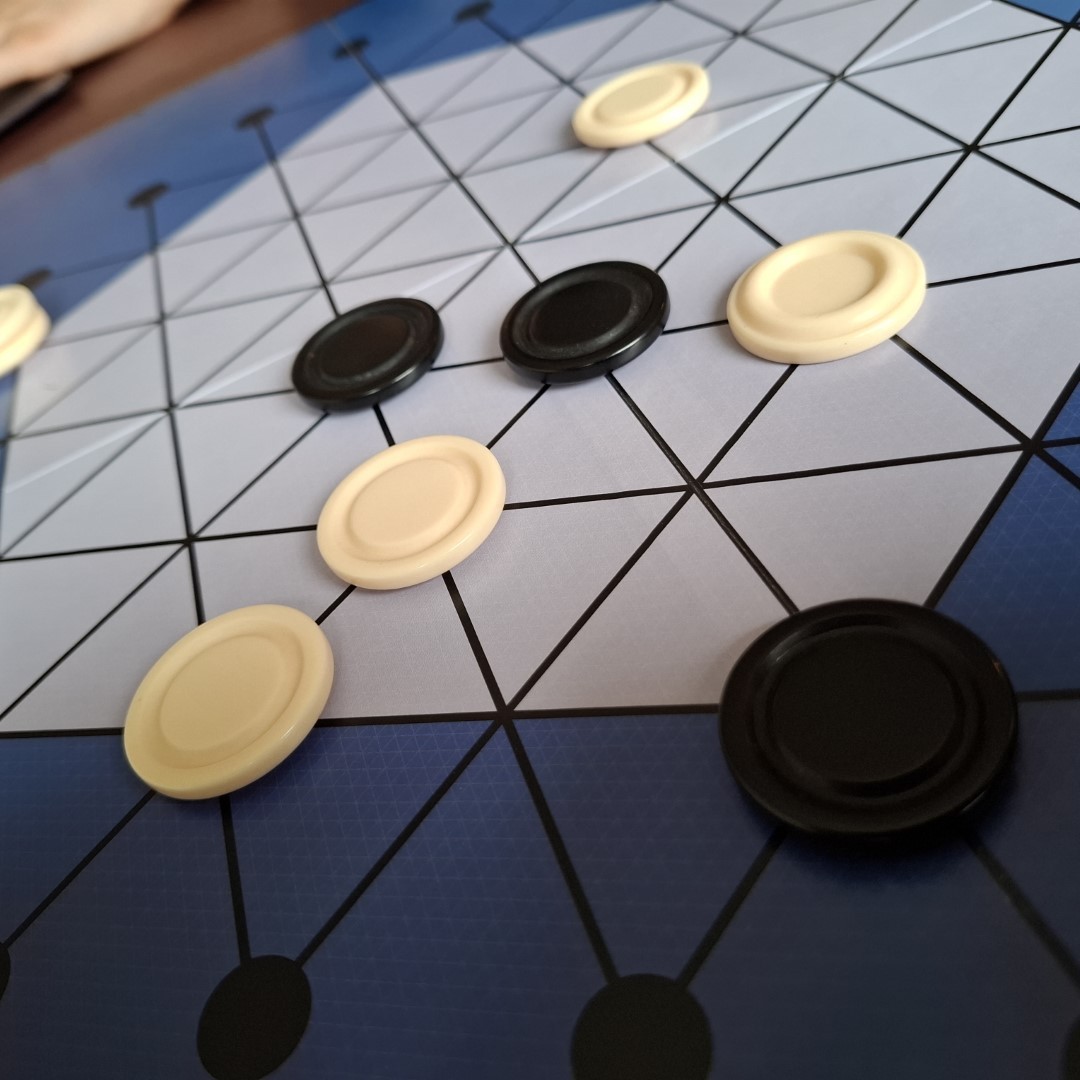
Final Thoughts and Ranking
As you know, I rank games on the following scale:
- Buy or Play
- Wait for Sale or Buy if You Like Game XYZ
- Avoid
For me, GIPF doesn’t quite reach the heights of TZAAR. Its slower pacing makes it feel a bit less enjoyable, and while I understand why the pieces don’t slide, I can’t help but wish they did (though that would likely increase production costs). This desire for a more tactile experience doesn’t impact my final ranking, but it would’ve been a nice touch.
At the end of the day, I’d rather play TZAAR, Santorini, or War Chest. However, if you enjoy those games and want another experience from the GIPF series, then GIPF is worth considering—just maybe wait for a sale. For me, this one is firmly in the Wait for Sale category, and if you’re curious about the series, I’d still recommend starting with TZAAR.
Want to purchase GIPF? You can here: https://kienda.co.uk/abstract-games/713-gipf-4260071879417.html (I do not gain commission from this link)
